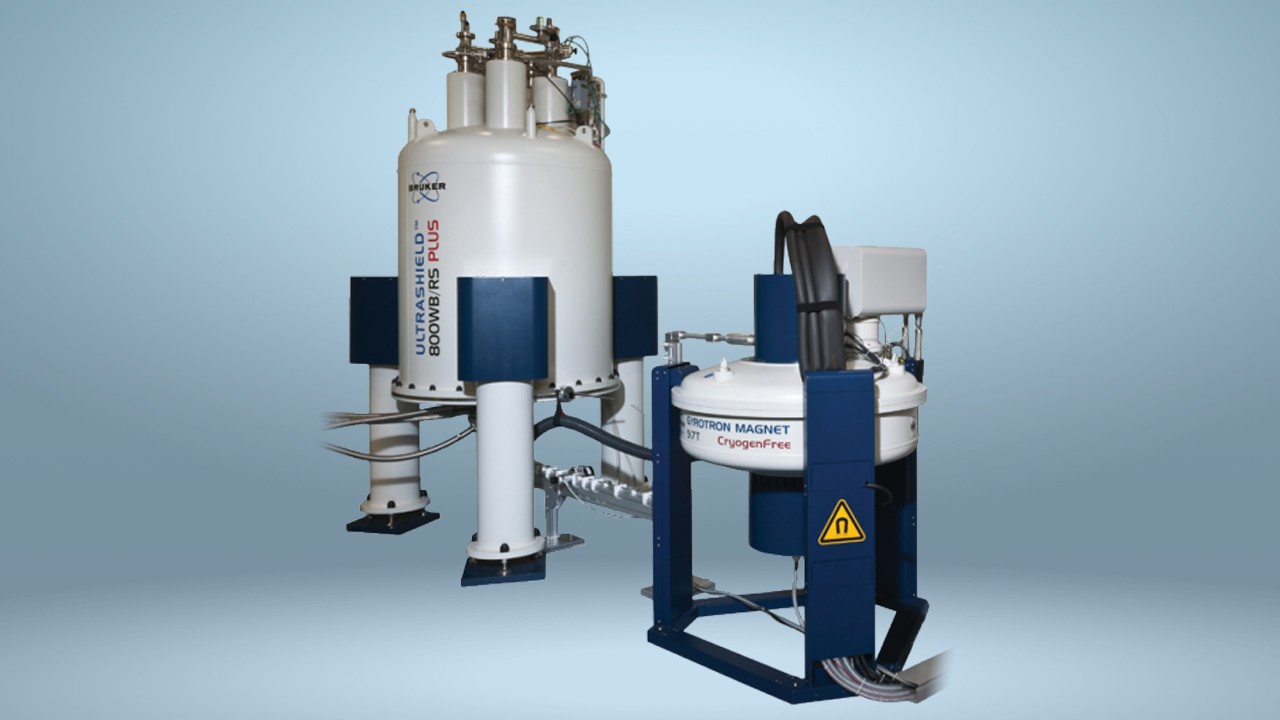

Advances in the Characterization of Protein Assemblies Using Solid-State NMR
Solid-state NMR spectroscopy is a valuable tool for studying the structure and dynamics of challenging biomolecular systems and is increasingly being used in the fields of structural biology, biophysics and physical chemistry.
In order to enhance the potential of solid-state NMR spectroscopy, researchers have been trying to develop approaches that will expand NMR applications and improve the efficiency of the technique.
At the NMR laboratory at the University of Delaware, Tatyana Polenova and colleagues have been using magic angle spinning solid-state NMR spectroscopy to characterize large protein assemblies. The team would like to understand how the properties of these protein assemblies may be linked to their dysfunction in disease. In particular, the team are interested in characterizing the assemblies that comprise the HIV-1 virus and the cytoskeleton.
In a recent interview, Polenova talked through some key areas of the team’s research, as well as some of the technological advances she hopes to see and also contribute to in the future.
“Current methods are not always sufficient to answer the biological questions of interest… We know that HIV-1 is a global pandemic and despite years of research by various people, there is still no cure,” she says. As structural biologists, the researchers want to see what they can contribute by finding out how HIV-1 structure and its interaction with host cell proteins play a role in disease.
The researchers are part of the Pittsburgh Center for HIV Protein Interactions. The center is funded by an NIH initiative and aims to characterize the structures of HIV–host cell complexes. The aim is to foster collaborations between people from different disciplines including crystallography, virology, NMR spectroscopy and biochemistry in the hope of developing methodologies and tools that can be shared among the HIV community. This would improve understanding of HIV pathogenesis and lead to new ways of investigating alternative treatment strategies.
Polenova also talked about the team’s work on proteins that come from the cytoskeleton, which associate with microtubules and actin. She explained that mutations in these proteins such as kinase and dynactin, can lead to the onset of disease. The team want to find out how the mutations are involved in changing protein structure, as well as how molecules move when they’re bound to these systems: “It turns out that structure and motion function in concert to either produce a healthy response or, unfortunately, cause disease.”
In terms of realizing these goals, Polenova talked more specifically about the methods the lab relies on for analyzing challenging biological systems, as well as some of the advances she hopes will be made to enhance current techniques.
For NMR spectroscopy, she feels the ability to use increasingly higher magnetic fields is the most important aspect of development. Companies such as Bruker are pioneers at this, she says, and she hopes this quest will continue because the team are currently limited, in terms of sensitivity and resolution, by the magnetic fields they can obtain.
Many biological systems cannot be produced in large amounts and Polenova thinks the second most important area is therefore the ability to access ultra-fast magic spinning methods. This would allow greater than ever resolution and sensitivity, thereby enabling the researchers to work with very small sample amounts.
Another exciting area that Polenova would like to get involved in is dynamic nuclear polarization (DNP), which enables large enhancement of sensitivity and could lead to breakthroughs because it would be possible to research natural abundance complex systems: “It was pioneered by a number of people in the field, including Bob Griffin and implemented by Bruker in the form of commercial instruments, which is very important for the community because we can now have easy access to this kind of instrumentation.”
In terms of challenges, one problem Polenova touched on is the low throughput of NMR. NMR cannot deliver information anywhere near as quickly as X-ray crystallography, but it does provide an exquisite level of detail. Polenova would like streamlining of this throughput to become an important focus of development, which would require a lot of computational work and software development.
Polenova also feels that integrating various complementary techniques such as NMR, X-ray crystallography and theoretical chemistry/biophysics, is the only way to provide the most detailed picture of complex biological systems: “There are really exciting developments in terms of these integrated techniques where we can provide information at atomic resolution on the details of structure and dynamics. Then, cryo-electron microscopy can get low resolution information about the envelope of large particles. This is integrated through computation to give an exquisitely detailed picture about the biological assemblies of interest.”
Finally, Polenova touched again on the importance of developing ultra-high field magnets and emphasised how the only way this can be achieved is through a shared network of facilities. No one lab should house instruments costing millions of dollars, she says, but by building networks, everyone can have access to state-of-the-art instrumentation. Furthermore, she believes researchers can collaborate within these networks to share ideas and attract people from other disciplines outside of magnetic resonance research.
“They can come and learn what NMR is about and bring their systems, to elevate the level of the problems and the questions that we’re currently asking,” she concludes.


